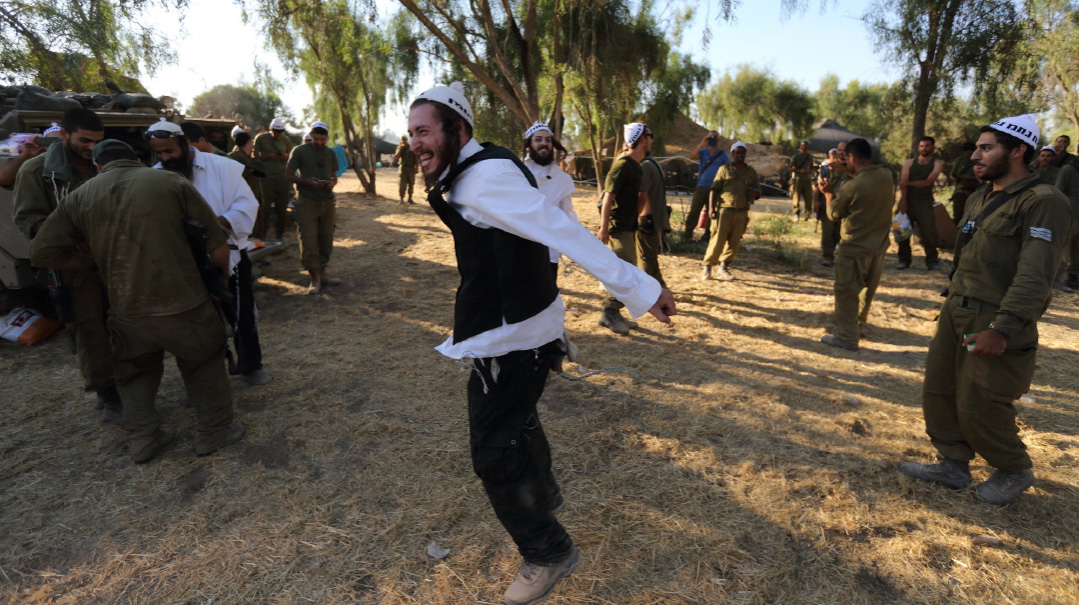The Great Debate

I have long felt that the term “secular studies” is often a misnomer
Last summer, the secular studies principal of a new yeshivah in Chicago contacted me for advice on what elements should go into the secular studies curriculum. I was thrilled by the request because I have long felt that the term “secular studies” is often a misnomer: the implication that there is something antithetical about kodesh and secular studies is a mistake.
The latter, it seems to me, can be designed in such a way as to serve as a valuable supplement to the limudei kodesh. For instance, Jewish history is the principal means by which Hashem reveals Himself to the world, and proper understanding of Jewish history can serve as a major buttress to emunah. Jewish history can strengthen our children’s identification with the historic Jewish people — a people with a very, very long history, whose survival is not only survival but flourishing — constitutes the longest ongoing miracle in human history. That study builds a sense of what a privilege it is to be one of the very few who is both the inheritor of a long past and potentially the author of a glorious future.
Not surprisingly, I also recommended a very strong emphasis on communication skills, both written and spoken. Learning how to convey an idea from one’s mind to that of another is as crucial in Torah discourse as in any other. As Rav Chaim Brisker famously used to say, “If [an idea] cannot be expressed, it does not exist.”
Punctuation and grammar are not arbitrary; they are rules that have developed over time to make it easier for the reader to grasp what is being said. But the more important aspect of good writing is learning how facts and ideas relate to one another. Learning to write is learning to think.
The reality one wishes to portray is often a tableau, but words and sentences are linear — one follows the other. At best the linear presentation can capture aspects of the tableau, and many choices will have to be made, and often remade, to discover the most easily grasped means of doing so.
The first rule of good writing is that it must start with an outline — a plan for getting from point A to point B. My high school English teachers were drill sergeants in something called the 3-3-3 paragraph, which eventually expanded to the 3-3-3 essay, each of which was always proceeded by the submission of an outline. The paragraph contained a topic sentence, three subtopic sentences, and three supporting details for each subtopic. Though mechanical in form, the exercise schooled us in figuring out where things fit logically in an argument. And not coincidentally did every survivor of four years of these exercises do better in college than they had in high school.
Debate tournaments constituted a major part of my high school years. And I strongly encouraged the principal with whom I met to find a way to include debating in the curriculum. High school debate won’t turn one into a great speaker. Debaters tend to clutch the lectern a bit too tightly. But the experience of becoming comfortable in front of an audience and of learning to assess audience reaction, even if the audience consisted only of one judge and a timekeeper, has proven invaluable.
One must learn to analyze arguments and evidence on the spot, especially if debating the negative side, because many affirmative teams seek to stretch the limits of the topic to the breaking point to ensure that the negative cannot anticipate their “plan” for fulfilling the topic.
One of my fellow debaters — today a Washington super lawyer — once began a mock debate by apologizing for his speech impediment: “I have to breathe.” I was one of those who spoke so quickly that he didn’t need to breathe. But the consequence was that I often repeated myself multiple times in response to the judge’s puzzled mien. My far slower talking partner, who went on to become chief counsel for Ford Motor Company, covered more ground speaking at half the pace because he didn’t need to repeat himself.
But the greatest benefit of debate, in my mind, is not the development of a technical skill. It is moral. Debate drilled in the message that there are at least two sides to most important issues. In the course of a season, one would inevitably advocate for both sides of the topic, and in some top tournaments one switched sides from round to round.
To engage in a debate is to acknowledge that there is another side. At the same time, it is to recognize the person on the other side as someone whose opinions are entitled to respect and from whom one might learn.
Roger Scruton, arguably the most profound conservative thinker of the past 50 years, used to say that leftists hate conservatives because they view them as evil, while he had no trouble getting on with leftists because he viewed them as simply mistaken. With someone who is mistaken one can debate and discuss.
The taste for discussion as a means of broadening one’s perspectives is in constant decline. Instead we prefer to frame all issues in terms of flat-earthers on one side and all reasonable people on the other. The other side are inevitably “deniers,” as in “global warming deniers,” who belong to the same moral universe as those who deny the Holocaust. That makes things easy: We never have to listen to their arguments at all. Indeed, to do so is to grant legitimacy to evil.
The great 19th-century Swiss art historian Jakob Burkhardt said, “The future belongs to those who see things simply.” That future has arrived. Most of the punditry that one reads is primarily designed to rally the home team rather than to convince someone inclined to disagree.
Partisanship reigns: First, you pick your team, and then you marshal your arguments. It is both amusing and depressing on issues such as the filibuster of judicial appointments or impeachment to watch both Democrats and Republican members of Congress twist themselves into pretzels, saying the exact opposite of what they said when the shoe was on the other foot.
Yet seeing things simply is, in most cases, not to see them well. If I had to summarize all that I have learned in my close to seven decades it is: “It’s complicated.” The subjects that attract me as a writer are davka those on which I know there is more than one view and neither is always right or always wrong. If everyone agrees, why write?
The thinkers who attract me possess what the poet John Keats called “negative capacity,” the ability to hold two mutually exclusive ideas in one’s head at the same time.
Seeking to persuade others, as opposed to just throwing red meat to those on your team, forces one to think better. Chief Justice John Roberts is widely considered the top appellate advocate of his generation, with Justice Samuel Alito not far behind. As conservatives on overwhelmingly liberal campuses — Roberts at Harvard and Alito at Princeton and Yale — they were not subject to the fatal lure of dismissing anyone who disagreed with them as a fool or a knave. They had to learn to put themselves in others’ shoes and anticipate their arguments. (The essence of effective oral advocacy is to anticipate the weaknesses of one’s own case and the questions that will be asked.)
Similarly, the great conservative columnists George Will and the late Charles Krauthammer benefitted greatly from writing for an audience not inclined to agree with them in the Washington Post. They had to develop unique voices — including dry humor — to gain a hearing. Likewise, both regularly explored some aspect of the human condition. By not limiting themselves to the narrowly political, they made it difficult to pigeonhole them as advocates of a particular political position or party, and thus harder to dismiss out of hand.
Writing to persuade rather than just reinforce, these two men became even clearer thinkers and I dare say better people. And so will the recognition of another perspective with which we must engage serve each of us.
Originally featured in Mishpacha, Issue 796. Yonoson Rosenblum may be contacted directly at rosenblum@mishpacha.com
Oops! We could not locate your form.







